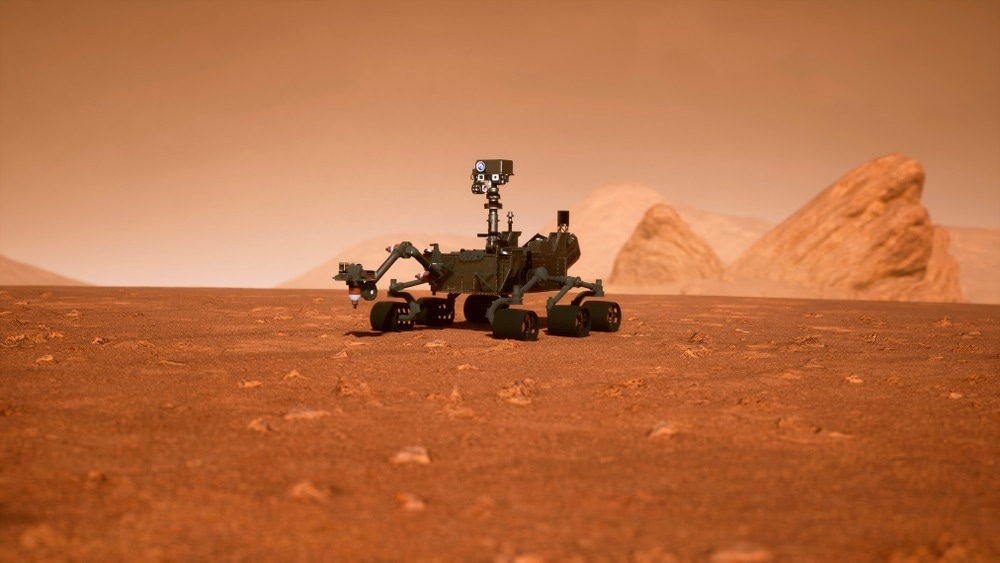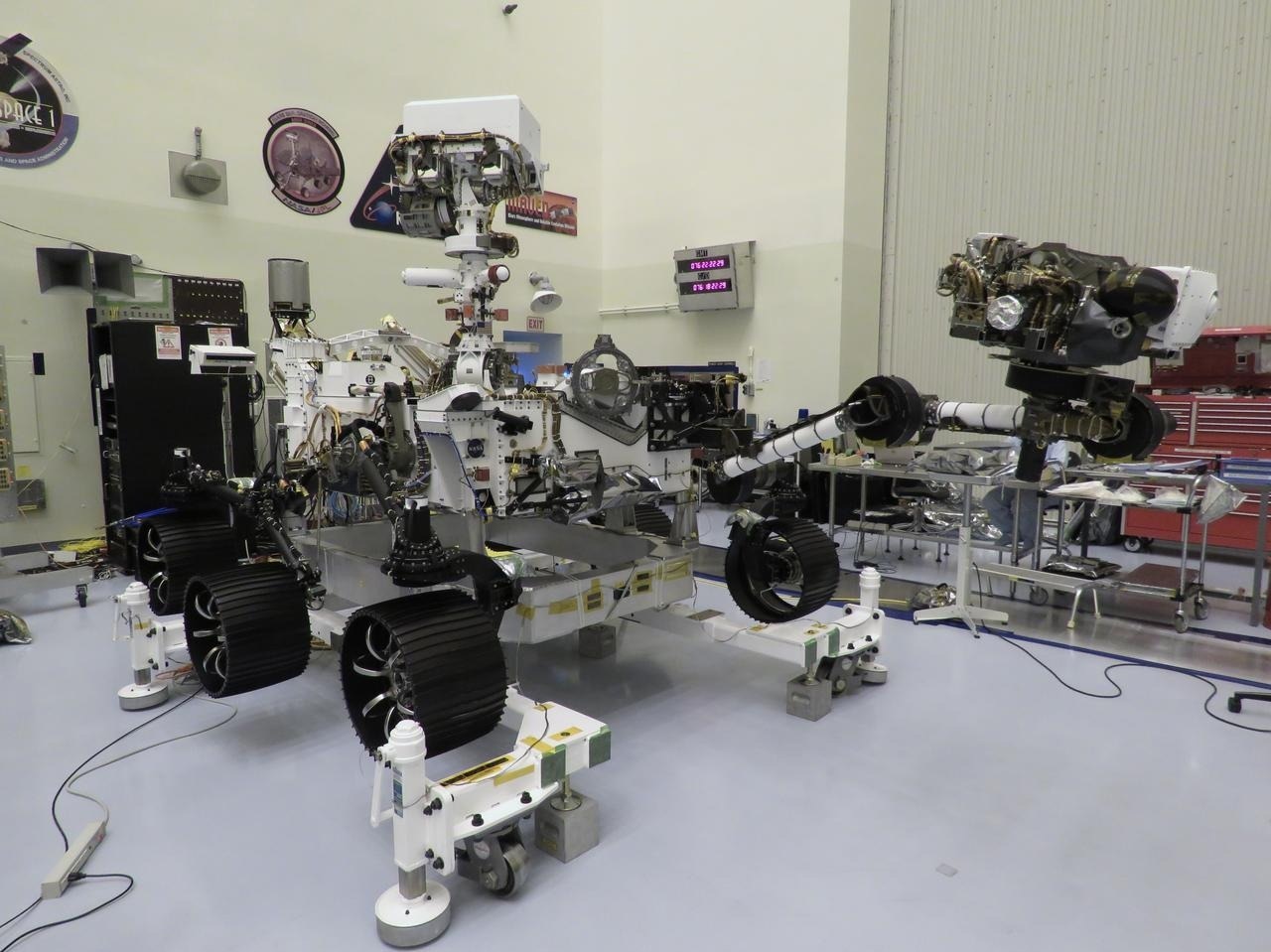What is NASA bringing home from Mars with its Sample Return Mission?

Image Credit: Design Projects/Shutterstock.com
This month marks ten years of operations on Mars for the Curiosity rover. One of the most important and ground-breaking aspects of the mission has been its ability to examine samples in-situ on the Red Planet as it searches for the signs of ancient microbial life.
In the belly of the Curiosity rover is the Sample Analysis at Mars (SAM) instrument, capable of breaking down and analyzing samples the rover drills free from the sediment of the Gale Crater — an ancient lake bed 96 miles wide — or ‘sniffing’ samples collected from the Martian atmosphere.
The analysis techniques of Curiosity have been improved upon by its fellow Red Planet robotic explorer Perseverance and the forthcoming Rosalind Franklin rover, which will journey to Mars as part of the European Space Agency’s (ESA’s) ExoMars program.
Yet, as undeniably impressive as these in-situ analysis methods are, they are limited to a set series of investigations. There are pieces of equipment that are simply too heavy or expensive to take off-world.
That means that planetary scientists and astrogeologists want to get their physical hands on some samples drilled from the rocks of Mars.
The incredible discoveries we have made about Mars from these remote labs could be bolstered if we can get samples to sophisticated labs here on Earth. Bringing samples to Earth could also allow researchers to distribute samples from Mars to teams with a variety of specialties.
This is the aim of the ESA and NASA Mars Sample Return mission.
According to NASA, the Mars Sample Return mission is an international project that aims to use robotic systems to return samples from the surface of Mars to Earth. The proposed mission could eventually form part of NASA’s Mars 2020 project.
Though the Mars Sample Return project is only now reaching the completion of its conceptual design phase, part of its mission architecture is already in place on the Red Planet in the shape of the aforementioned Perseverance rover.
Meet the Mars Sample Return Mission Relay Team
As Perseverance drills samples from the rocks in the Jezero Crater, it places them into small metal canisters. These are currently transferred to sample analysis within the rover itself. But, in the future, the role of Perseverance — which landed on Mars in February of 2021 — could be to hand these samples off to be transported back to Earth.
A second leg in the Mars Sample Return ‘relay team’ will be the Sample Retrieval Lander, set to launch from Earth to the Red Planet at some point in the mid-2020s. The lander will set down in the Jezro Crater, nearby to where Perseverance is currently operating.
The role of the Sample Retrieval Lander is to collect the sample from its rover partner and then use an attached rocket — the Mars Ascent Vehicle — to launch the cache into orbit around Mars. Perseverance has a second option of directly returning samples to the Mars rocket itself for launch into orbit.
The third athlete in the Mars sample relay team, the Mars Ascent Vehicle, will be the first rocket ever to launch from the surface of Mars.
Once the samples are in orbit around the Red Planet they can be snagged by the Capture/Containment and Return System which is part of the Earth Return Orbiter. They will then be transferred to a clean zone area on the orbiter for the journey to Earth.

The “Send Your Name to Mars” logo is installed on the Mars Perseverance rover on March 16, 2020, inside the Payload Hazardous Servicing Facility at NASA’s Kennedy Space Center in Florida. When the rover lands on the Red Planet on Feb. 18, 2021, it will be carrying the names of more than 10 million people throughout the world. Those names were etched onto a microchip, which was placed aboard Perseverance. Liftoff aboard a United Launch Alliance Atlas V 541 rocket is targeted for mid-July from Cape Canaveral Air Force Station. NASA’s Launch Services Program based at Kennedy is managing the launch. Image Credit: NASA JPL ATLO
The ‘fifth runner’ in the crew, the Earth Return Orbiter, ferries the samples and the Capture/Containment and Return System back to Earth. At this point, another of its components springs into action to conduct the final leg of the sample return race.
The disk-shaped Earth Entry System takes the sample and launches it from the Earth Return Orbiter. The craft is equipped with a heat shield to protect the sample from re-entry into Earth’s atmosphere.
When Will the Mars Sample Return Mission Begin?
Now the evaluation and refinement stage of the Mars Sample Return Mission has been completed, with several elements dropped in favor of a greater reliance on Perseverance, the next stage of planning can begin in October this year.
This is the preliminary design phase that is expected to last around 12 months. This stage will see the finalization of technology development and the creation of engineering prototypes of the major mission components.
The Earth Return Orbiter is set to launch in late 2027, while the Sample Retrieval Lander is scheduled to follow it in mid-2028. NASA says it expects the first samples to be returned from Mars to Earth in 2033.
“These first collected and returned samples could answer a key question: did life ever exist on Mars?” NASA says. “Only by bringing the samples back can we truly answer the question by using the most sophisticated, state-of-the-art labs, at a time when future generations can study them using techniques yet to be invented.”
More from AZoQuantum: Hunting the ‘Missing Link’ Between Black Hole Growth and Star Formation
References and Further Reading
Mars sample return, ESA, [Accessed 08/06/22], [https://www.esa.int/Science_Exploration/Human_and_Robotic_Exploration/Exploration/Mars_sample_return]
Mars Sample Return, NASA JPL,[https://www.jpl.nasa.gov/missions/mars-sample-return-msr]
NASA Will Inspire World When It Returns Mars Samples to Earth in 2033, NASA Mars Exploration Program, [2022], [https://mars.nasa.gov/news/9233/nasa-will-inspire-world-when-it-returns-mars-samples-to-earth-in-2033/]
Disclaimer: The views expressed here are those of the author expressed in their private capacity and do not necessarily represent the views of AZoM.com Limited T/A AZoNetwork the owner and operator of this website. This disclaimer forms part of the Terms and conditions of use of this website.